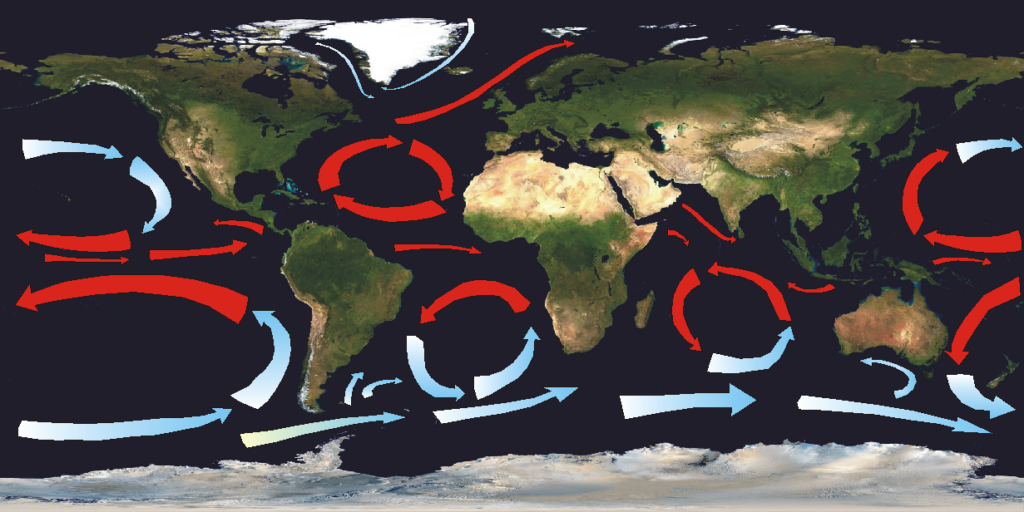The Plastisphere – An Oceanic Cosmos of its Own
By Priya Mohandoss MRSV

To say that there is an enormous amount of plastic in our oceans is an understatement. A 2023 study has estimated that there are more than 170 trillion plastic particles, with a combined weight of over 2.33 million tonnes, currently floating in the world’s oceans.1
What is the plastisphere?
Present on plastic marine debris is a thin biofilm – a layer of organisms that coats the plastic.2 It is called the “plastisphere” and is regarded as separate to nearby seawater and other natural objects. Although the plastisphere has been around for as long as plastic has been entering the environment, it was marine microbiologist Linda Amaral-Zettler at the Royal Netherlands Institute for Sea Research who first coined the term in 2010. It was then published in a 2013 study that determined the presence of this plastic-colonising microbial community.3
Where is it found?
Today, plastic marine debris is found in all five major ocean gyres, and in the Southern Ocean.4 Gyres are areas of large circulating ocean currents that act like a vortex, causing floating waste to be gently drawn into their core. Although the plastisphere was first encountered in the North Atlantic Subtropical Gyre,3 it is now believed to be present across all of these stretches of seawater.
What lives there?
The plastisphere acts similarly to other ecosystems, however it is an anthropogenic region where mostly microbes such as bacteria and algae call their abode. It is also sometimes referred to as an artificial “manmade reef”. The presence of these different types of organisms allows for processes such as photosynthesis to occur. In addition, various fungi have also been found on plastic marine debris, and are likely to be the key to carbon processing,5 where it is possible for fungi to absorb carbon and direct it to higher levels in the food chain instead of it being sent back as carbon dioxide into the atmosphere. Other sea animals that are able to drift on, or attach themselves to, scraps of plastic also occupy this region, ranging from crabs to molluscs to jellyfish.
How is plastic classified?
Depending on its size, plastic can either be microplastic or macroplastic. Microplastics are any type of plastic that is 5mm or less in diameter, such as resin pellets found mostly in shampoo and gels. Macroplastics are made up of large items such as single-use plastic bags, food packaging and straws. However, it is important to note that macroplastics can also become secondary sources of microplastics if they break down. Most of the plastic marine debris curling swirling around the ocean are microplastics. Along with other major environmental concerns, such as overfishing, they too are now seen as an ocean stressor.
How does time have an impact?
Organisms found on the plastisphere can survive for much longer than those that live on natural materials such as feathers or driftwood. This is due to plastic having a slow decay rate. However, this can also be a setback as it means that these organisms are able to sail across much of the ocean. As a consequence, this creates a vehicle of passage for harmful algal-bloom-forming algae and potential pathogenic bacteria such as vibrios species. Furthermore, the interaction of microbes with plastics and their associated persistent organic pollutants, additives and metals,6 can result in the production of toxins. Therefore, any external source that comes into contact may become affected, creating instability to those marine networks already present and disrupting the ocean food web.
What areas still need to be considered?
Although the plastisphere may be seen as an emerging threat, it is also somewhat of an enigma. As a consequence, there is a need to unravel its mysteries in order to gain a sense of awareness of its interactions with ocean life and all that it embraces.
—
Priya Mohandoss is an RSV member and has a Bachelor of Science and both Masters of Journalism, and Communications and Media Studies from Monash University.
This piece appears in the August 2023 edition of Science Victoria magazine. All issues can be read online for free at rsv.org.au/Science-Victoria.
References:
- Eriksen, M., Cowger, W., Erdle, L. M., Coffin, S., Villarrubia-Gómez, P., Moore, C. J., Carpenter, E. J., Day, R. H., Thiel, M., & Wilcox, C. (2023). A growing plastic smog, now estimated to be over 170 trillion plastic particles afloat in the world’s oceans—Urgent solutions required. PLOS ONE, 18(3), e0281596. doi.org/10.1371/journal.pone.0281596
- Zettler, E. (2013, July). The “Plastisphere:” A new marine ecosystem. ocean.si.edu/ocean-life/plastisphere-new-marine-ecosystem
- Zettler, E. R., Mincer, T. J., & Amaral-Zettler, L. A. (2013). Life in the “plastisphere”: microbial communities on plastic marine debris. Environmental science & technology, 47(13), 7137-7146. doi.org/10.1021/es401288x
- Amaral-Zettler, L. A., Zettler, E. R., & Mincer, T. J. (2013). Welcome to the plastisphere: Ocean-going microbes on vessels of plastic. The Conversation, 141-154.
- Arias‐Andres, M. (2020). Who is where in the Plastisphere, and why does it matter?. doi.org/10.1111/1755-0998.13161
- Masó, M., Garcés, E., & Camp, J. (2003). Drifting plastic debris as a potential vector for dispersing Harmful Algal Bloom (HAB) species. hdl.handle.net/10261/2640









